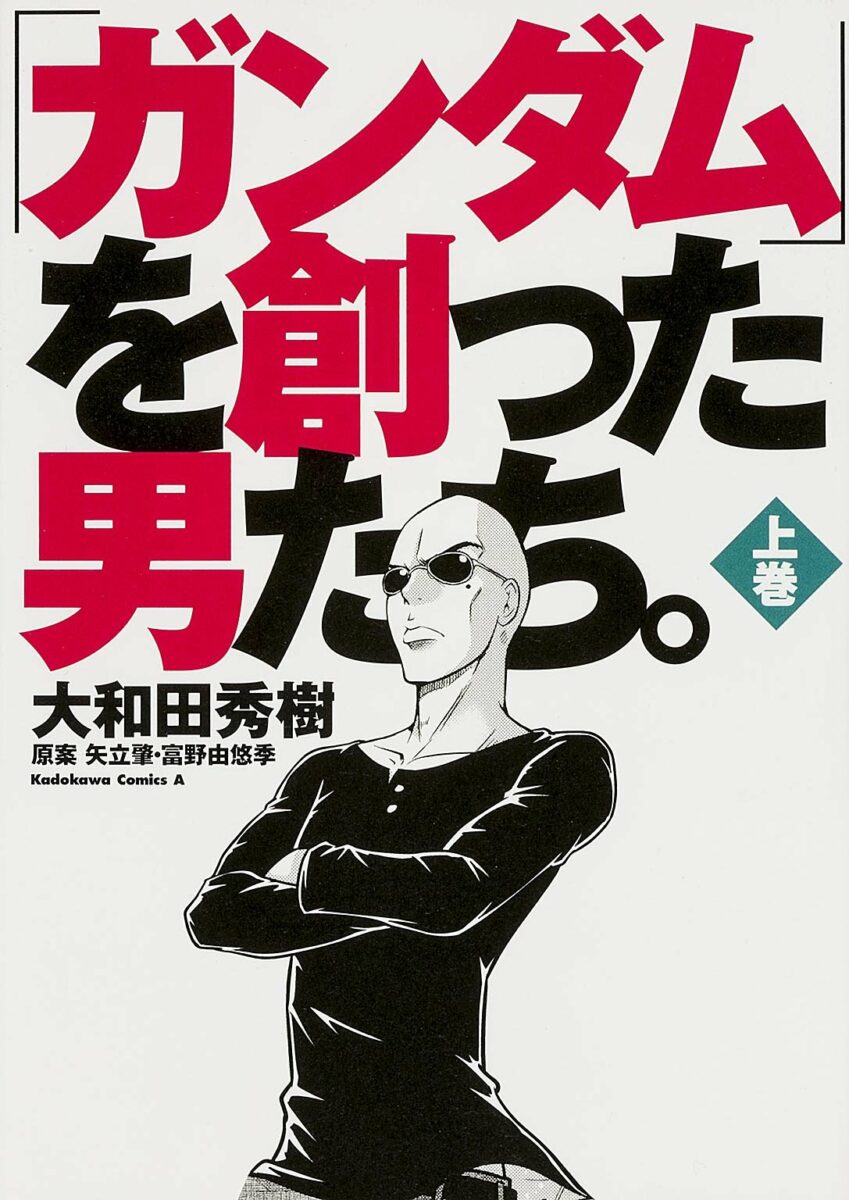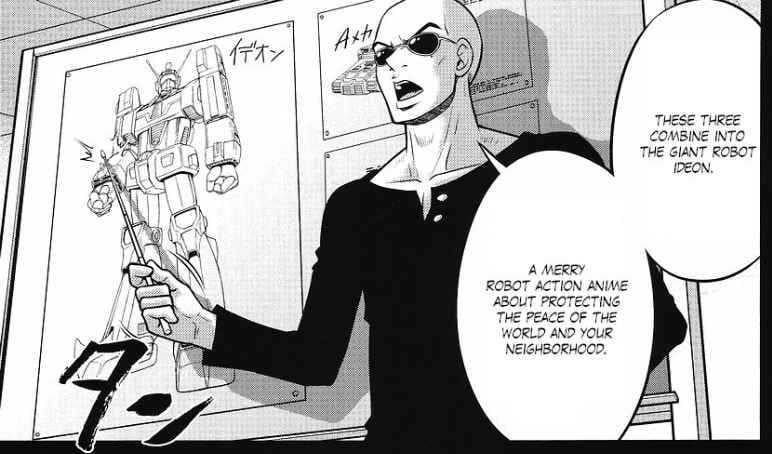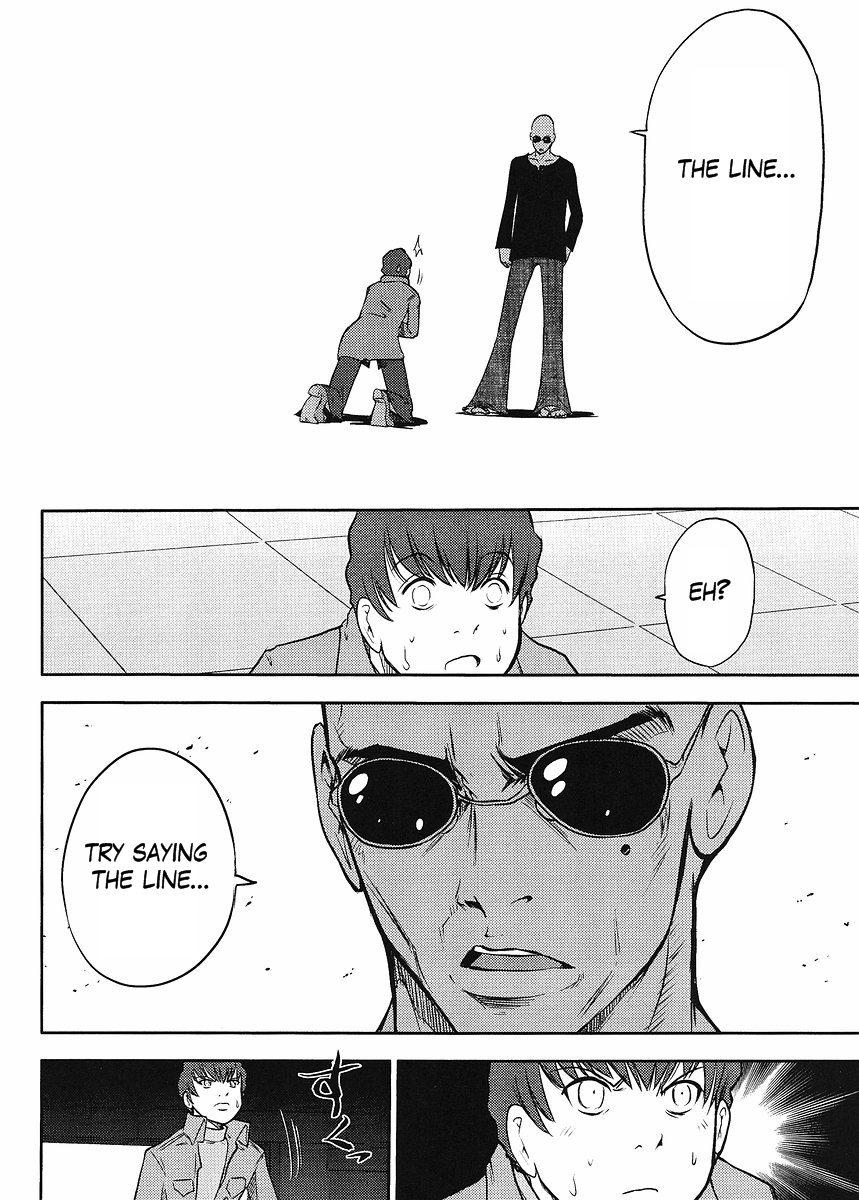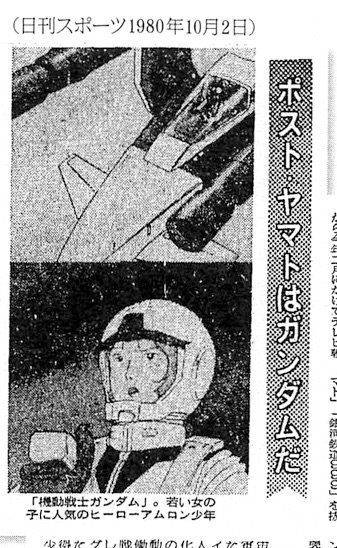It can be a daunting task to chronicle the story behind-the-scenes of the Gundam franchise. Then, try making that tale entertaining. Enter Gundam Sousei (“Gundam Genesis” in English), an intentionally embellished account of the people who first created our favorite fighting machines. Beyond covering the rise of an institution, it brilliantly captures the dawn of an era, as the anime industry comes into its own.

The brainchild of mangaka and franchise fanboy Hideki Owada (of The Legend of Koizumi infamy), Gundam Sousei was released over the course of 25 chapters, from March 26th, 2009 until New Year’s Day of 2011. In fact, as recounted by the author in an omake, the manga owes its existence to one sentence uttered by Tomino to Owada at a party. When asked about making a biographical work, Tomino said:
“Do what you want.”
https://twitter.com/jiraiya2771/status/952693102577205248
The manga garnered a following from the moment it was published, both in Japan and abroad. Still, is Gundam Sousei worth your while, or is this mythologizing of a popular franchise just a glorified vanity project? Is it perhaps, a bit of both? The answer, in short, is all of the above, but there’s more to it beneath the hijinks.
A Turbulent Ride
Gundam Sousei is the tale of writer-director Yoshiyuki Tomino, a real-world rising star with a chip on his shoulder. Enamored with science fiction and having seen many stories of robots coming to the aid of humanity, he began entertaining the idea of a more realistic narrative in which mecha are used more as tools in a wider human drama. In 1978, however, when anime was seen as nothing more than glorified toy commercials for kids — even in Japan — building a new franchise was easier said than done. But with artist Yoshikazu “Yaz” Yasuhiko on board and the stressed-out staff of Sunrise behind his back, he’ll stop at nothing to change the face of Japanese animation forever.

The manga, on the face of it, doesn’t seem to put much effort into historical accuracy. Tomino, for instance, is exaggerated into being an egotistic, “Gonzo”-type firebrand akin to the late Hunter S. Thompson, while Yaz comes off as a cocky hotshot fresh off Space Battleship Yamato. Whether it’s drafting a screenplay or a meeting with corporate executives, the banalest moments are similarly made as over-the-top as the mangaka could get away with. This all takes place amidst the excesses and changes Japan saw during the ’70s and ’80s. Having the voice actors resemble their characters, with a young Tohru Furuya looking almost exactly like Amuro Ray, is just the icing on the cake.

Setting aside some of the more glaring creative liberties (like having Sunrise’s lead director being the studio’s collective pseudonym Hajime Yatate), you get the impression that the truth isn’t that far off. While things like explaining the evolution of the iconic Mobile Suit and Kunio Okawara’s methodology behind his now-famous designs seem straightforward enough (both to appeal to the show’s sponsors and get away with as much creative freedom as possible), other tidbits like the notorious “Seductive Artesia” incident (in which Tomino called a fanzine over nude art of Sayla Mass just to complain about the coloring being off) can come off as so absurd that the author has to slip in asides and factual interludes showing that the events mentioned really did happen.

Considerable attention is placed on the tumultuous production of the original Mobile Suit Gundam, with entire episodes being done by the skin of the Sunrise staff’s teeth in the face of initially poor viewing numbers. Even with the irreverent tone and exaggerated personality quirks, just about every character (real and stand-in alike) is given a paradoxically fair treatment that’s largely faithful to who they’re supposed to be, which also extends to the very corporate executives who had previously been dismissive of anime as mere children’s fare. It’s apparent that the author did extensive research into the subject matter, and did so with tremendous care.
Spectacle and Significance
Coming from the same mind behind The Legend of Koizumi, it’s little surprise that Gundam Sousei pulls no stops when it comes to visuals. From freshly-hired program director Momoe Kusakari looking like a shoujo protagonist (based on her relative inexperience at the time) to Yaz looking like an aloof celebrity in a polyester suit (representing his rising fame even compared to Tomino), the character designs neatly reflect the exaggerated personalities of the real-life characters. Meanwhile, almost every panel is brimming with energy to the point that even an audition featuring a drunkard revealed to be a young Shūichi Ikeda can feel larger than life. Given how over-the-top some of those events were, those embellishments weren’t far off.

While the manga remains focused on Tomino and his crew, it’s not just a vanity project about the franchise. It makes a point to not only touch upon the inner workings of a studio like Sunrise at the time, with some of the issues lampooned being all too familiar if you’ve seen J-List’s coverage of the anime industry (such as crunch-laden timetables and the rise of the committee system), or explore the lesser-known yet no less insane origin stories of animation icons like Ichiro Itano of Macross fame. Rather, the manga’s biggest significance is in how it captures a pivotal moment in the evolution of anime as you know it, from the perspectives of those who make it and its growing fandom. That even the creators of Gundam, for all their ambitions and egos, couldn’t have foreseen how far their brain-child would go just adds more to that sense of being there with them to witness it.
No wonder they drew him like "Spike" in Gundam Sousei manga. pic.twitter.com/8APKpXGfjR
— Petsu-chan (@Petsuchan) July 18, 2021
It’s no wonder that the manga has gained accolades among Western critics, even as early as 2009. It is also unsurprising, then, that an English localization was announced around the 40th Anniversary of the franchise in 2019, dubbed The Men Who Created Gundam. Granted, if you’re looking for a truthful and accurate rendition of its creation, you’re more likely to get it from interviews and documentaries than this manga. Still, if you don’t mind an over-the-top romp that isn’t that far off from the truth, then Tomino’s wild ride may just be worth your time.
What are your thoughts on Gundam Sousei? Tell us in the comments below!















